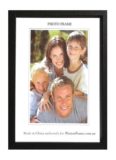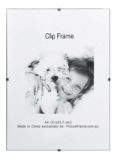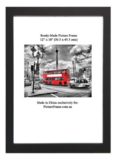![]() In this post we will write about unmet, failed, or broken expectations. Not about big life expectations, but smaller ones,
In this post we will write about unmet, failed, or broken expectations. Not about big life expectations, but smaller ones,  like the obvious one you would naturally experience when you fit a steel wire to the back of a picture frame, and rightfully expect it to hold, only that it doesn't, and you end up with a broken glass, frame, or both. From time to time we have discussions with Customers as to which material, steel wire, or rope, is the strongest, safest and most durable to hang a picture with. Invariably, Customers asks or suggest the former, and are surprised when we tell them that, in our experience, cord is the gold standard. Our experience in observing and repairing frames that were damaged by falling to the floor as a consequence of hanging failure is not inconsiderable, it spans around half a century.
like the obvious one you would naturally experience when you fit a steel wire to the back of a picture frame, and rightfully expect it to hold, only that it doesn't, and you end up with a broken glass, frame, or both. From time to time we have discussions with Customers as to which material, steel wire, or rope, is the strongest, safest and most durable to hang a picture with. Invariably, Customers asks or suggest the former, and are surprised when we tell them that, in our experience, cord is the gold standard. Our experience in observing and repairing frames that were damaged by falling to the floor as a consequence of hanging failure is not inconsiderable, it spans around half a century.
Hanging failures may are largely attributable to three main causes: 1) when the picture frame hangers break or come off the back of the frame, 2) when the wall hooks detach and fall off the wall and 3) when the hanging wire, or cord break and fail. In this post we will discuss only the last cause, since the prior two causes were written about in prior posts, such as how to hang picture frames level.
Returning to the main topic of this posts, that of steel wire versus cord for hanging picture frames, below we include a photograph of a failed plastic coated stainless steel-wire:

The above picture is that of a somewhat pricey braided, multi-strand, plastic coated, stainless steel wire sold nationally and rated at nearly 30 kilograms. We don't know what caused it to break and fail but the picture frame that it was holding was less than 5 kg. Perhaps it was pulled, strained or yanked off the wall hangers, although the Customer told us that it fell by itself, without interference.
Below, is a similar, US-made plastic coated, stainless steel wire which also failed while supporting the hanging of a picture frame well below its overstated break-point.

Some believe that non-ferrous metal wires ( those not sourced from iron ores , such as aluminium and consonant alloys such as tin, copper, brass, bronze, etc ) are better than ferrous ones as these feel more pliable, flexible and adaptable to bending and straining. However we have also come across numerous failures of non-ferrous wire, as exemplified below:

That being said, our preferred hanging medium is not a iron, steel, or non-ferrous ferrous wire, but an Australian-made, braided polyester rope ( also called V.B. Cord or Venetian Blind cord). It is a very lightweight, high strength rope particularly suited for picture framers to use in picture framing and with picture frames, having a breaking point of nearly 200 kg.
It is spun from 100% polyester yarns which produce a tough, durable, yet highly flexible cord which ties, twirls, twists, staples and parts off well.

So far as picture hanging purposes are concerned, polyester is better than nylon as the former is more resistant to heat than the latter which does not endure heat as well and degrades at high temperatures and has relatively lower sunlight resistance. Polyester also has a higher melting apex point, which is not disadvantageous. Again, the former is just about as tough as nylon when dry. Not that it should rain indoors, but polyester maintains its strength even when wet.
We are not mechanical engineers or metallurgists but it would appear that steel wire has a finite fatigue life after which time it tends to fail, or break, if you will. Recent evaluation studies in the failure of wire bridge stays in Asia have determined that that some of the longest service life of the cables were around 21 years, the shortest was only 6 years, and the average about 14 years of service life.
In all cases, the actual service life of the wire was far shorter than the the device, structure or apparatus that the wire was holding, staying , steadying or supporting.
With regard to the polyester rope, or cord, we use to hang our picture frames with, one of the main reasons we use it is because of its twisted strands construction and manufacture. This method naturally enough serves to hold and bind the cord together, but it also permits to much more evenly distribute loads and tensions amongst, and to, each and every strand.
If the rope, or cord, was left untwisted, the shortest strands would be subjected to the greater proportions of the total tensions and loads, thus accelerating or greatly hastening catastrophic failure. Because of all of the above considerations as well as our own practical, empirical experience we almost exclusively use braided rope, or cord, to string our picture frames rather than any metallic wire .
For example, below is one of our popular, A0 raw oak wood poster frames with clear glass strung with polypropylene, 2.5 mm, white, braided cord. This picture frame, at 9 kg, is one of our heaviest ready-made poster frames, and, to reiterate, like all the custom picture frames that we have made over the years, is fitted with a tough and durable cord that has never failed us over the many years that we have been using it.
All that being said, there is a small drawback with picture frame polyester cord, and that is that it stretches, often around 10 % of its length. In practical terms all that means is that a hung picture frame may sag a little with the passing of time. In reality this small downside hardly seems to really matter as we can count on one hand the number of complaints we have received about this issue.
Perhaps a last point to mention is that we always use -white- cord. Some years ago we were asked by a professional picture hanger to use a darker coloured one so that handling finger prins and scuff marks would not show up as much. However the picture hanger stopped hanging picture frames and we actually had a few Customers remarking as to how they preferred the white colour, so we reverted back to the original colour and no one has`requested a changer ever since.
To conclude, if and when a Customer specifically instructs to use picture framing wire rather than cord, we do do it, because, and naturally enough, we also stock the wire, however, if we're asked for our preference and recommendation, we stick to our proven and well-trusted picture framing cord, and, by the way, no, we don't own shares in that company. Thank you for reading this post about picture frame cord.









